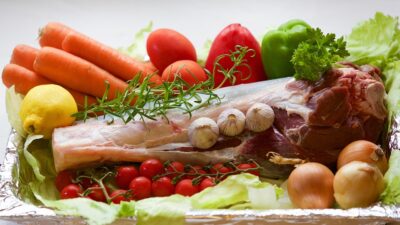Culinary artistry often hinges on the delicate equilibrium of four fundamental elements: salt, fat, acid, and heat. Understanding how these components interact not only enhances flavor but also elevates cooking from mere sustenance to gastronomic delight. This article explores how each element contributes to culinary magic and offers insights into achieving that perfect balance on your plate.
1. Salt: The Flavor Amplifier
Salt is often dubbed the "universal flavor enhancer" for good reason. It transcends mere seasoning; it unlocks flavors, balances sweetness, and suppresses bitterness. Salt works its magic through two primary mechanisms:
-
Flavor Enhancement: Salt can make foods taste more flavorful, even with fewer ingredients. It amplifies the natural tastes of meats, vegetables, and grains, making them sing.
- Texture Improvement: In brining, salt hydrates proteins and allows them to retain moisture. It is essential for achieving perfectly seasoned, juicy meats and crunchy pickles.
How to Use Salt Wisely
-
Layering: Season in stages during cooking rather than just at the end. This technique allows the salt to permeate and enhance each layer of flavor.
- Types of Salt: Experiment with various salts—kosher, sea, or flaky—to find the right texture and salinity for your dishes.
2. Fat: The Flavor Carrier
Fat plays a crucial role not only in mouthfeel but also in flavor distribution. It acts as a carrier for various taste compounds, enriching the overall experience. Different types of fat can impart unique characteristics to a dish:
-
Cooking Fats: Oils and butter add richness and help in the browning process, creating complex flavors through the Maillard reaction.
- Finishing Fats: Ingredients like olive oil, butter, or even ghee can be drizzled on dishes just before serving to enhance flavor and richness.
Balancing Fat in Your Cooking
-
Healthy Options: Explore alternatives like avocado oil or nut oils that offer distinct flavors with health benefits.
- Mind the Quantity: While fat enhances flavor, too much can overshadow other elements. A delicate balance is key.
3. Acid: The Brightener
Acid is the balancing agent that cuts through richness, elevating dishes and adding brightness. It comes from various sources, including citrus, vinegar, fermented foods, and even tomatoes. Acid works to:
-
Enhance Flavor Complexity: Acidity adds layers to your dish, providing contrast to the richness of fat and the depth of flavor.
- Preserve and Tenderize: Marinades often incorporate acid to tenderize proteins and impart zestful flavors.
Harnessing the Power of Acid
-
Experiment with Types: Lemon juice, balsamic vinegar, or yogurt can impart different levels of acidity and flavor profiles.
- Balance is Key: Use acid to counterbalance salt and fat—just a splash can transform a dish from mundane to extraordinary.
4. Heat: The Transformative Force
Heat is the orchestrator in the kitchen, responsible for transforming raw ingredients into cooked meals. The method of applying heat—whether through grilling, roasting, simmering, or frying—dictates texture and flavor development.
-
Cooking Techniques: Different techniques can highlight or diminish flavors. For instance, searing meat creates a flavorful crust, while slow-cooking can deepen the overall taste profile.
- Temperature Matters: The right temperature can make or break a dish. A slow braise brings out the flavors in tough cuts of meat, while quick sautéing preserves the brightness of vegetables.
Mastering the Art of Heat
-
Preheat Your Cooking Surface: Achieving proper heat ensures even cooking and enhances browning, leading to richer flavors.
- Know When to Lower the Heat: Sometimes, lowering the temperature allows for gentle cooking, perfect for delicate foods or sauces that need time to develop.
Conclusion: Creating Culinary Magic
The magic of cooking lies in balancing salt, fat, acid, and heat. Each element contributes uniquely to the overall flavor profile, creating a symphony on your plate. Mastering these components is not just about following recipes; it is about understanding the science and art of flavor.
As you embark on your culinary journey, remember that cooking is an exploration of balance and creativity. Playing with these four elements can lead to innovative dishes that tantalize the palate and elevate your dining experiences. Embrace the magic, and let each ingredient shine in harmony.



